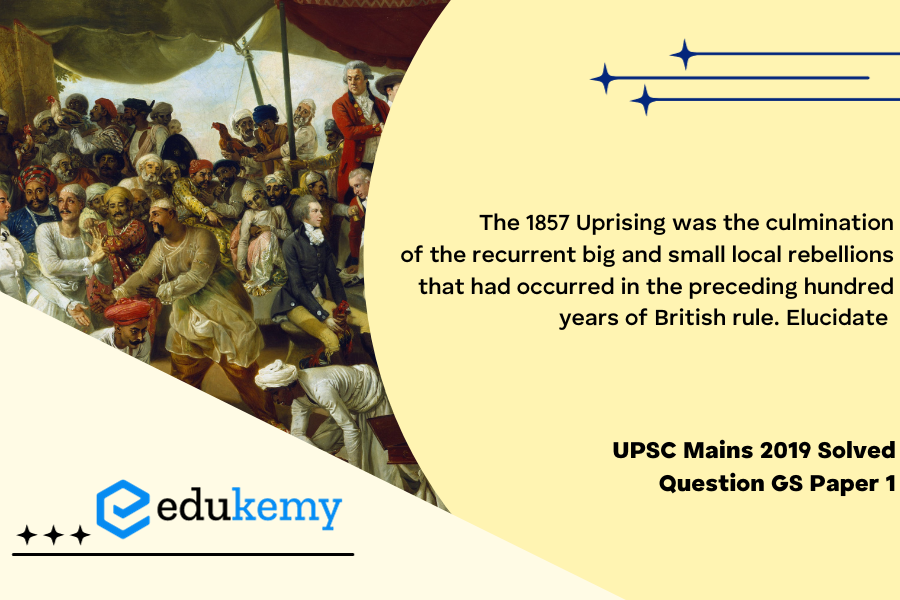The 1857 Uprising, also known as the Indian Mutiny or Sepoy Mutiny, marked a pivotal moment in the history of British colonial rule in India. This tumultuous event was not an isolated occurrence but rather the culmination of a century-long series of both significant and minor local rebellions that had simmered across the subcontinent. The roots of discontent can be traced back to the early days of the British presence in India, as a multitude of social, economic, and cultural grievances festered among the Indian population. The annexation of princely states, imposition of unjust taxes, and the perceived cultural insensitivity of the British East India Company fueled a growing discontent. The spark that ignited the powder keg was the introduction of the new Enfield rifle, whose cartridges were rumored to be greased with cow and pig fat, deeply offending Hindu and Muslim sepoys. The 1857 Uprising thus emerged as a complex tapestry woven from the threads of long-standing grievances, reflecting the deeply entrenched resentment that had accumulated over a century of British rule.
Tag: Modern History.
Contents
Decoding the Question:
- In the Introduction, try to briefly write about rebels and rebellions in the first 100 years of British rule in India.
- In Body, write how the rebels and rebellions culminated in the great revolt of 1857.
- In Conclusion, try to write overall reasons for rebellions and their culmination in the 1857 uprising.
Answer:
The year 1857 often referred to as the Indian Mutiny or the First War of Independence, witnessed a seismic upheaval in India’s struggle against British colonial rule. However, this watershed event did not occur in isolation, it was the culmination of a series of both significant and localized revolts that had punctuated the preceding century of British dominion. These recurrent episodes of resistance, ranging from larger uprisings to smaller local rebellions, collectively paved the way for the massive and coordinated rebellion of 1857.
Recurrent Rebellions Occurred in the Preceding Hundred Years of British Rule:
- Sanyasi Uprising: It is also known as the Sannyasi rebellion which took place around Murshidabad and Baikunthpur forests of Jalpaiguri. The cause of the rebellion was the restrictions imposed on the pilgrims visiting the holy places. The Sanyasis raided the English factories and collected contributions from the towns, leading to a series of conflicts.
- Pagal Panthis: Leaders such as Tipu were motivated by both religious and political motives and took up the cause of the tenants against the oppression of the Zamindars.
- Faraizi Revolt: Led by Shariatullah Khan and Dadu Mian, the Faraizi Movement (1838-1848) was the first ever no-tax campaign to support the cause of the tenants against the landholders and the British government. It took place in the Faridpur, Bakarganj, and Mymensingh districts of Bengal.
- Wahabi Movement: The Wahabi Movement was the type of a revivalist movement that tried to purify Islam by eliminating all the un-Islamic practices that had crept into Muslim society through the ages. It offered the most serious and well-planned challenge to British supremacy in India.
- Kuka Revolt: They started out as a group for religious purification in Sikhism but under Ram Singh, the movement acquired a political overtone with the established aim of restoring Sikh rule in Punjab and ousting the foreign powers.

- Early Munda Uprising: Munda Rebellion is one of the prominent 19th-century tribal rebellions in the subcontinent. Birsa Munda led this movement in the region south of Ranchi in the period of 1789-1832, the Munda rose in rebellion seven times against the landlords, dikes, money-lenders, and the British, who instead of protesting them sided with the oppressors.
- Khond Uprising: Their uprisings from 1837 to 1856 were directed against the British due to an attempt by the government to suppress human sacrifice (Mariah), the introduction of new taxes by the British, and the influx of Zamindars and money-lenders into their areas which was causing the tribals untold misery.
On obvious accounts, the Revolt of 1857 was the major instance of traditional India’s struggle against foreign rule spread far and wide. The colonial administration ended the relative isolation of tribes and brought them fully within colonization which led to the tribal uprising. There were over forty major rebellions excluding hundreds of minor ones from 1763 to 1856. The economic exploitation, racial and discriminatory policies, religious interference, and ruthless approach to suppress the uprisings finally culminated in the revolt of 1857. It was no sudden occurrence instead of a culmination of a century-long tradition of fierce popular resistance to British domination.
In case you still have your doubts, contact us on 9811333901.
For UPSC Prelims Resources, Click here
For Daily Updates and Study Material:
Join our Telegram Channel – Edukemy for IAS
- 1. Learn through Videos – here
- 2. Be Exam Ready by Practicing Daily MCQs – here
- 3. Daily Newsletter – Get all your Current Affairs Covered – here
- 4. Mains Answer Writing Practice – here


